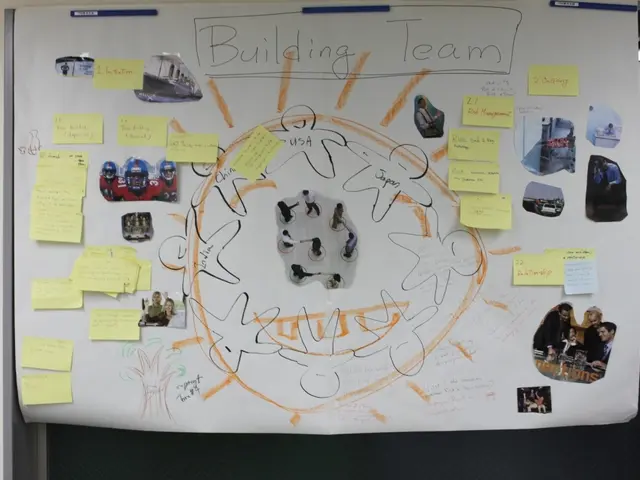Campless Guide: Helping Your Teen Conquer Driving Neuroses
Overcome Your Child's Anxieties Surrounding Driving Lessons Directly
Come along as we journey through the ups and downs of guiding your teen in their driving lessons, without letting anxiety hold you back. Embrace your worries, and together with your teen, turn them into motivating drivers!
Key Takeaways
- Own Your Fears: Understand your concerns and conquer them head-on to establish a foundation of trust and effective communication with your teen driver.
- Meet Them Halfway: Practice empathy with your teen's perspective, facing the challenges they may be experiencing while learning to drive.
- Monitor Progress: Observe their ability to follow traffic rules and signs, and aid in their progression and growth.
- Encourage Safe Habits: Promote secure practices such as wearing seat belts, complying with speed limits, and avoiding distractions.
- ** toss Professionals’ Coats**: It's okay to seek extra help from professional trainers to ensure high-quality instruction and on-road safety.
- Empower Your Teen's Confidence: Help them grow their driving skills by practicing in safe areas and providing constructive feedback.
Acknowledge Your Fears
- Face the Fear: Admit your trepidation about your teen learning to drive and take the initial step towards overcoming it.
- Create a Strong Foundation: Addressing fears helps build a stronger connection and understanding between you and your teen, paving the way for a more productive learning experience.
Wear Seat Belts
Know Their Perspective
Buckle up before starting the car to reduce the risk of injury.
- Empathy is Key: Familiarize yourself with your teen's viewpoint, understanding the pressures they might be under, boosting your ability to address their fears and concerns effectively.
- Set Up a Supportive Learning Environment: Encourage open communication to create a safe space for your teen to express their anxieties during driving lessons.
Track Performance
Follow Speed Limits
- Check Progress: Monitor your teen's growth in driving, noting their improvement and areas needing improvement.
- Boost Safe Driving Habits: Regularly review their driving progress, emphasizing the importance of safe driving practices to help them develop essential skills.
Obey posted speed limits to ensure a safe and controlled driving speed.
Prioritize Safe Practices
- Secure Driving: Promote habits like wearing seat belts, following speed limits, avoiding distractions, and using defensive driving techniques to prepare them for unexpected road situations.
Avoid Distractions
Bring in the Big Guns: Professional Training
Stay focused on the road by not using phones or engaging in other distracting activities.
- Top-notch Instruction: When choosing driving education for your teen, consider the benefits of professional training for skill-building, confidence enhancement, and lower accident rates.
Ignite Their Confidence
Defensive Driving Techniques
- Start Small: Practicing in safe environments will help boost your teen's confidence gradually as they improve their driving skills.
- Celebrate Accomplishments: Praising small milestones like successful parking or smooth lane changes motivates your teen, increasing their overall confidence.
Be prepared for unexpected situations and react calmly and safely.
Ease Parental Worries
- Safety First: Focus on a safety-first approach to alleviate parental anxieties, building confidence in both you and your teen driver.
- Positive Reinforcement: Use positive reinforcement techniques, such as praise, rewards, and joint celebrations, to ease concerns and promote a supportive learning environment.
Check Blind Spots
Trust and Communication
Always look over your shoulder when changing lanes to avoid collisions.
- Transparency Access: Encourage open conversations about fears and concerns to establish trust and understanding between you and your teen.
- Boundary Setting: Having clear expectations prevents potential accidents and helps your teen understand what is expected during driving lessons.
Embrace Safety
- Safety Matters: Prioritize road safety through simple actions like checking mirrors, using turn signals, and abiding by speed limits.
- Defensive Driving: Master defensive driving techniques to anticipate potential road hazards and react calmly to keep both you and your teen safe on the road.
Achieve Peace of Mind
- Fear Acknowledgement: Face your fears but don't let them direct your actions. Seek support, practice relaxation techniques, and focus on positive outcomes.
- Relaxation Tools: Use tools like deep breathing, anxiety-reducing music, and visualization to stay relaxed during driving lessons.
Praise for safe driving
Frequently Asked Questions
Boosts confidence
How to Combat Driving Lesson Anxiety?
"You handled merging onto the highway really well!"
- Embrace the Challenge: Acknowledge your fears, but don't let them control you. Utilize relaxation strategies and focus on positive outcomes.
How to Tranquilize the Anxiety of Your Child Driving?
Rewarding good driving behavior
- You got this! Embrace your fears, practice relaxation, and use positive affirmations. Consider employing a professional instructor for support.
Motivates teen driver
How Do I Quell Fear of My First Driving Lesson?
Offering extra driving privileges
- You can quell fear by acknowledging your apprehension, practicing in a distraction-free and safe environment, communicating with your instructor, and focusing on the positive aspects of this experience.
How to Face Fear of Driving?
Celebrating milestones
- To face your fear of driving, recognize your anxiety, but make sure it doesn't dominate your actions. Break down lessons into manageable steps, seek professional instruction, and utilize relaxation techniques. Believe in yourself and focus on progress.
Fosters a positive environment
Enrichment Data: Expert Insights for Navigating Parental Fear
Going out for a celebratory meal after a successful driving session
- Create a Safe, Distraction-Free Learning Space: Guarantee driving practice occurs in areas with reduced noise and minimal distractions to create a safe, productive environment for both parent and child.
- Build Confidence and Trust: Be patient and empathetic, trusting in your child's ability to learn and improve with practice. Positive reinforcement and encouragement boost your child's confidence and reduce tension.
- Set Small, Achievable Goals: Break down lessons into manageable steps, celebrating small victories to keep motivation high and anxiety low for both parties.
- Seek Professional Support if Needed: If worries or tension become overwhelming, consider professional driving instructors who are trained to handle new drivers and can provide a neutral, stress-free environment.
- Develop a Support Network: Connect with other parents or mentors who have gone through similar experiences. Sharing concerns and strategies can offer emotional relief and practical advice.
- Focus on the Positive: Remind yourself of your child's strengths and achievements to keep a positive outlook during driving lessons. Visualizing successful outcomes helps shift your focus away from fear.
Science has shown that health-and-wellness practices such as deep breathing and anxiety-reducing music can help alleviate driving neuroses for both parents and teen drivers. Additionally, fitness-and-exercise routines can help improve focus and reduce stress, aiding in participants' ability to manage their fears during driving lessons. In parenting, empathy and open communication can go a long way in understanding the pressures your teen driver is experiencing and foster a supportive learning environment that encourages safe driving practices.








